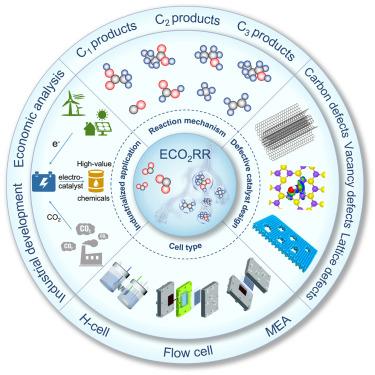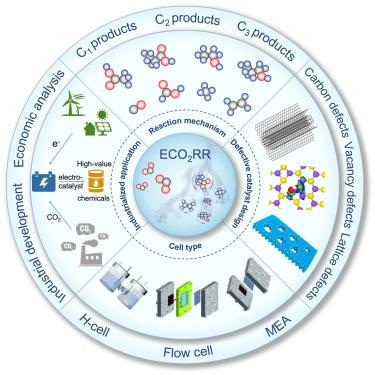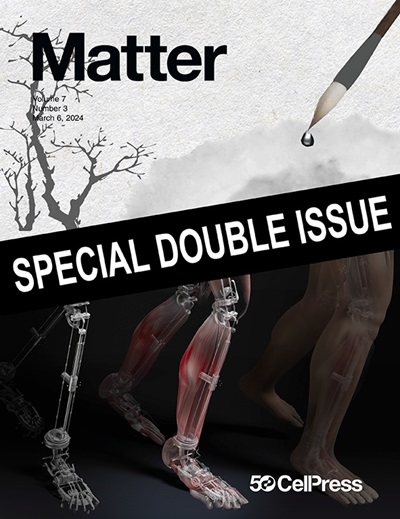选择性电催化CO2还原纳米材料的缺陷工程
IF 17.5
1区 材料科学
Q1 MATERIALS SCIENCE, MULTIDISCIPLINARY
引用次数: 0
摘要
缺陷工程调控一直被认为是构建高选择性电催化二氧化碳还原反应(ECO2RR)催化剂的有效策略。近年来,通过缺陷设计开发高效催化剂,将二氧化碳转化为高价值化学品,如C1、C2和C3产品,取得了巨大的成就。本文简要而全面地回顾了ECO2RR领域的最新进展。在空位缺陷、掺杂缺陷、晶格缺陷和边缘缺陷的框架下,总结了近年来发展起来的一系列缺陷策略。除了催化剂设计与性能之间的关系外,还讨论了影响ECO2RR电解槽性能的器件类型、离子交换膜和电极配置等关键因素。最后,强调了工业应用的最新进展和相关的经济分析,以及一些挑战和机遇。本文章由计算机程序翻译,如有差异,请以英文原文为准。


Defect engineering of nanomaterials for selective electrocatalytic CO2 reduction
Defect engineering regulation has long been regarded as an efficient strategy to construct highly selective electrocatalytic carbon dioxide reduction reaction (ECO2RR) catalysts. Recently, tremendous efforts have been made in the development of efficient catalysts by defect design to convert CO2 into high-value chemicals such as C1, C2, and C3 products. Here, a concise but comprehensive review of recent progress in the field of ECO2RR is provided. A series of recently developed defect strategies are summarized under a framework of vacancy defects, doping defects, lattice defects, and edge defects. Besides the relationship between catalyst design and performance, the key factors of device types, ion-exchange membranes, and electrode configuration related to the performance of ECO2RR electrolyzers are discussed. Lastly, recent advances in industrial applications and related economic analyses, along with some challenges and opportunities, are highlighted.
求助全文
通过发布文献求助,成功后即可免费获取论文全文。
去求助
来源期刊

Matter
MATERIALS SCIENCE, MULTIDISCIPLINARY-
CiteScore
26.30
自引率
2.60%
发文量
367
期刊介绍:
Matter, a monthly journal affiliated with Cell, spans the broad field of materials science from nano to macro levels,covering fundamentals to applications. Embracing groundbreaking technologies,it includes full-length research articles,reviews, perspectives,previews, opinions, personnel stories, and general editorial content.
Matter aims to be the primary resource for researchers in academia and industry, inspiring the next generation of materials scientists.
 求助内容:
求助内容: 应助结果提醒方式:
应助结果提醒方式:


